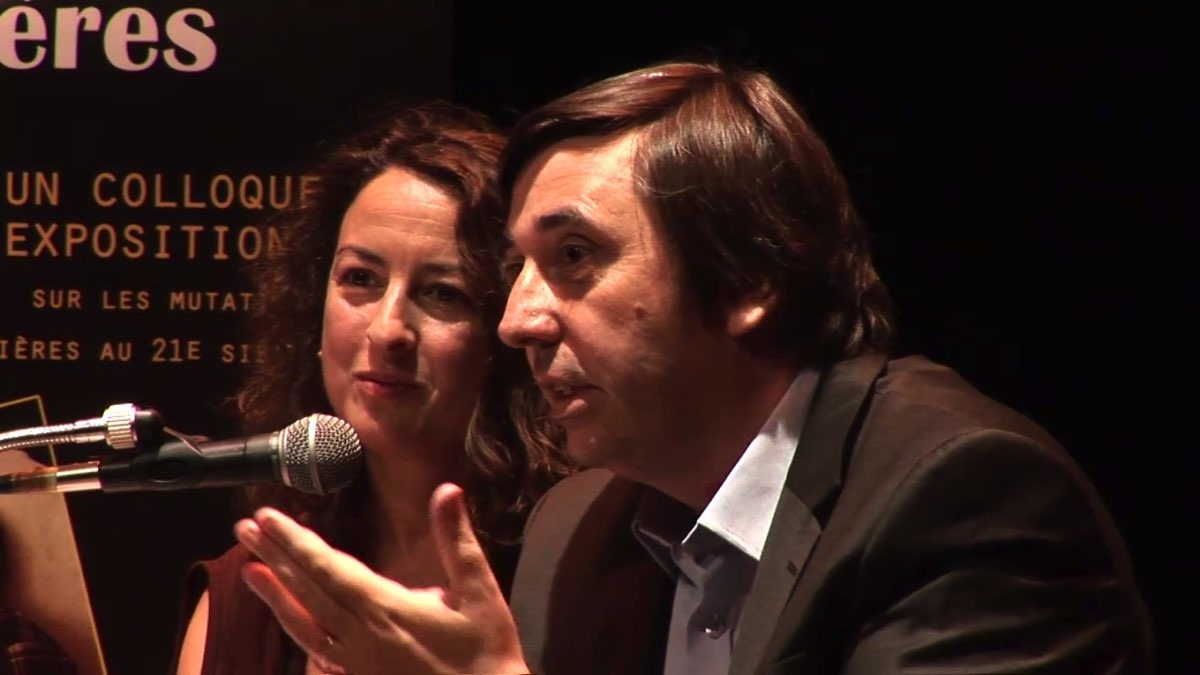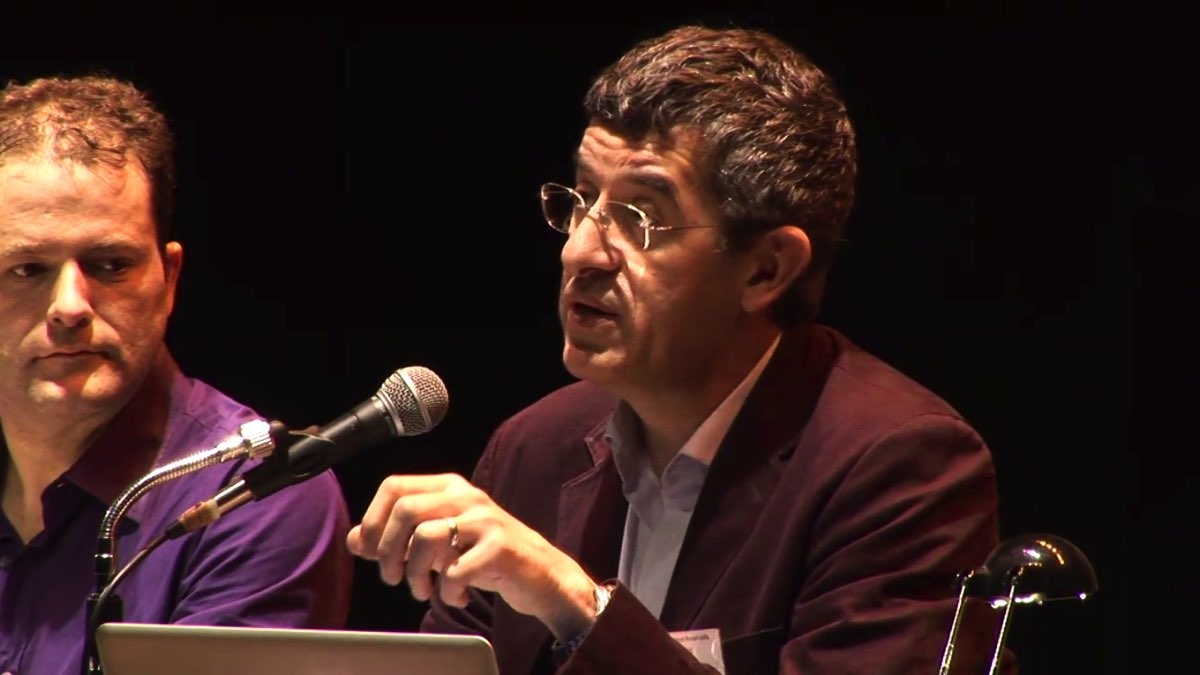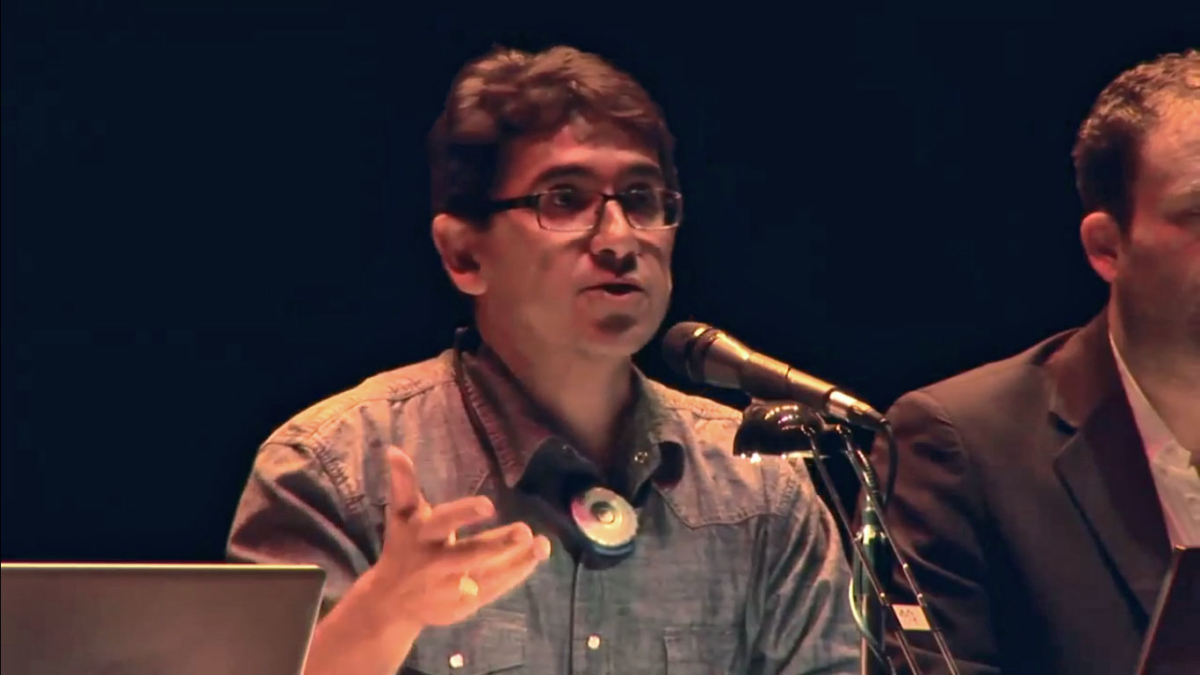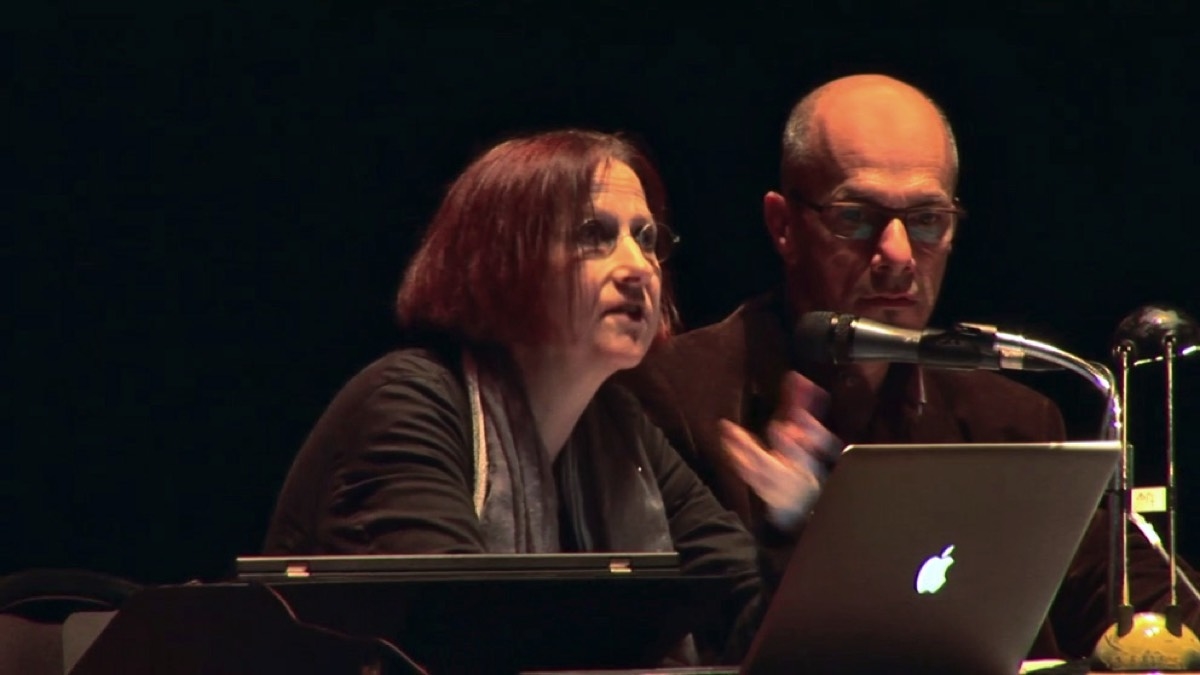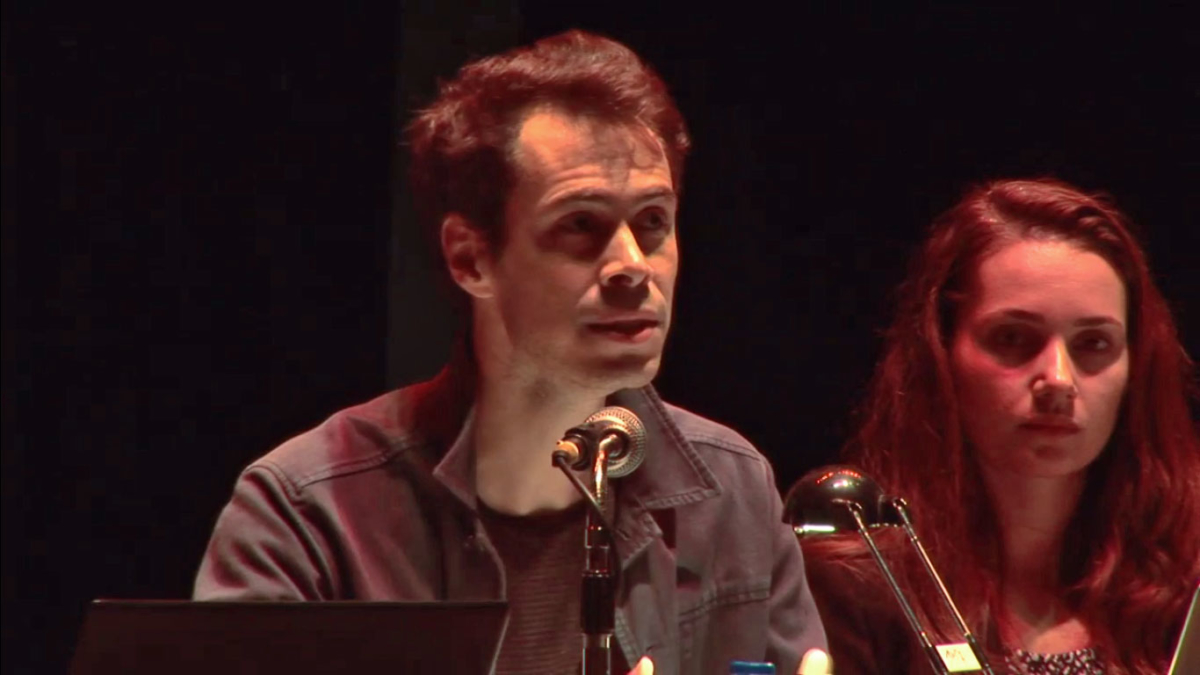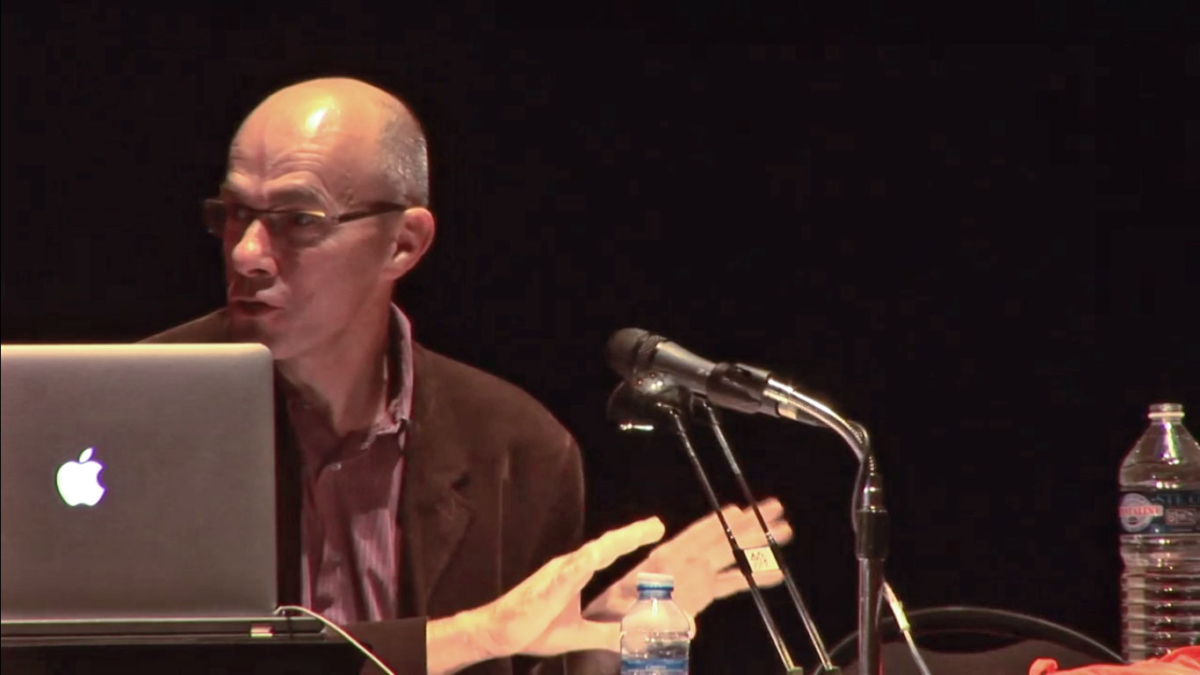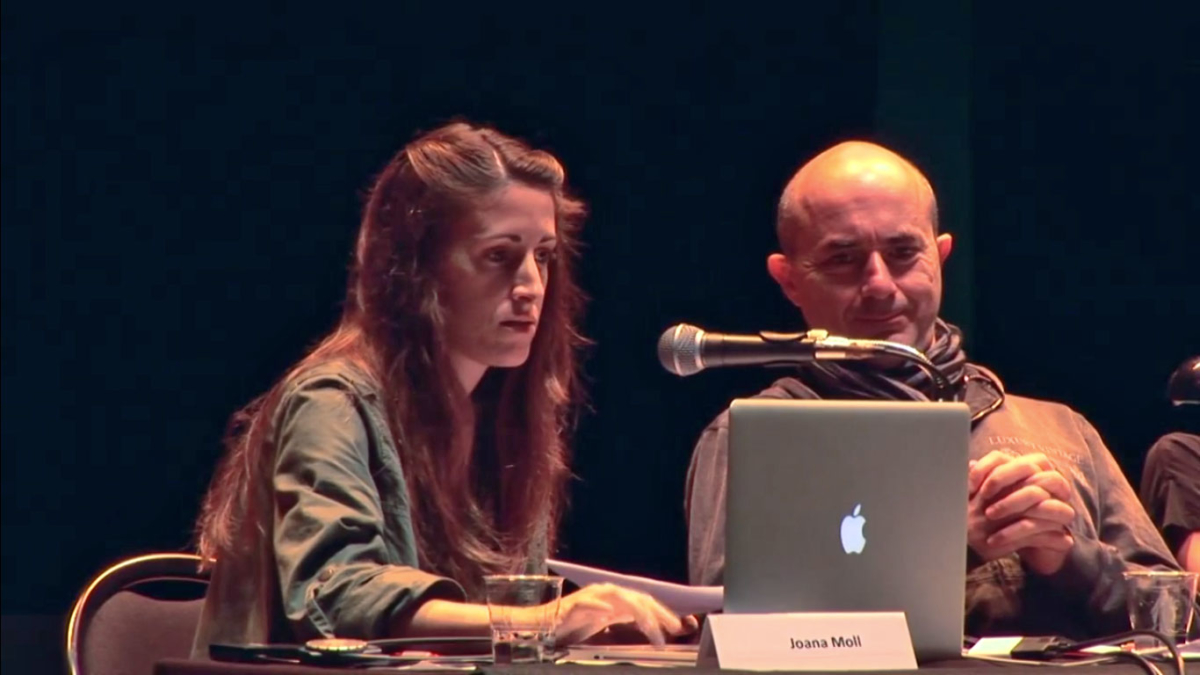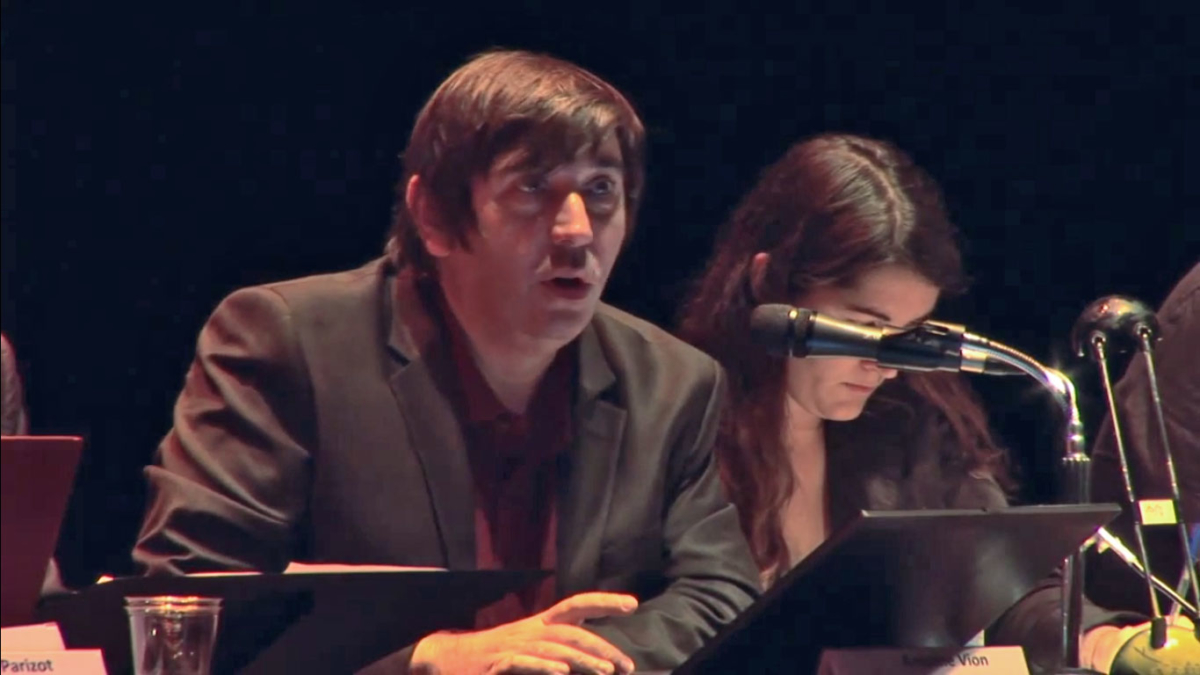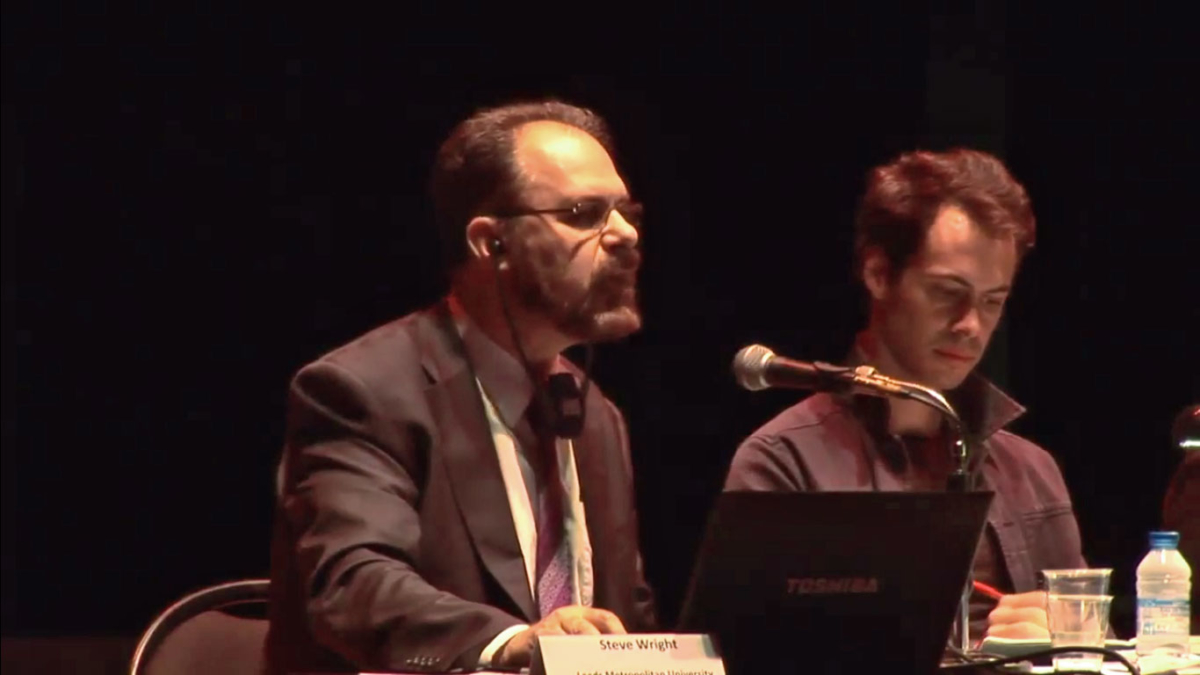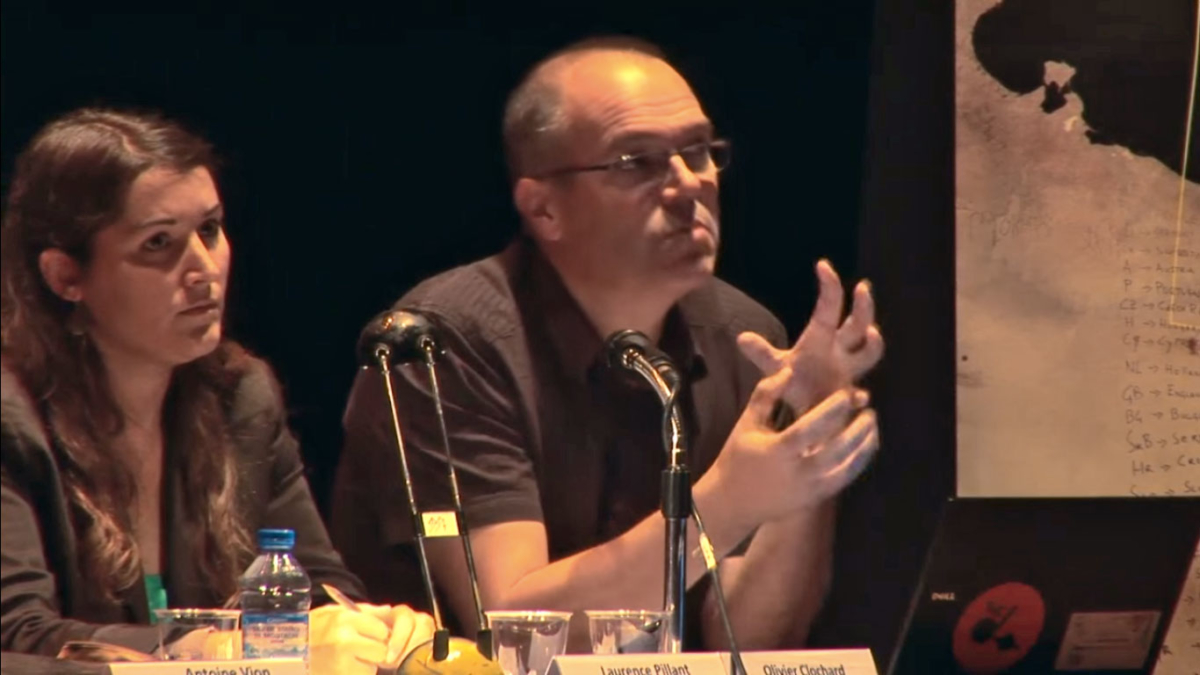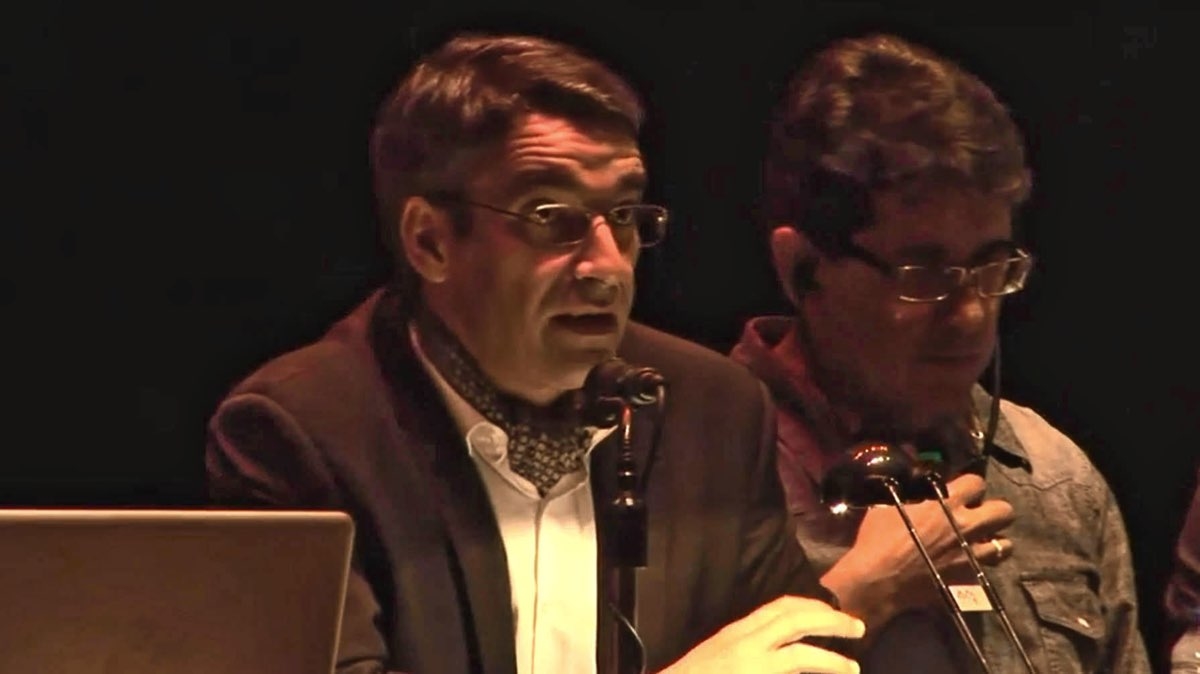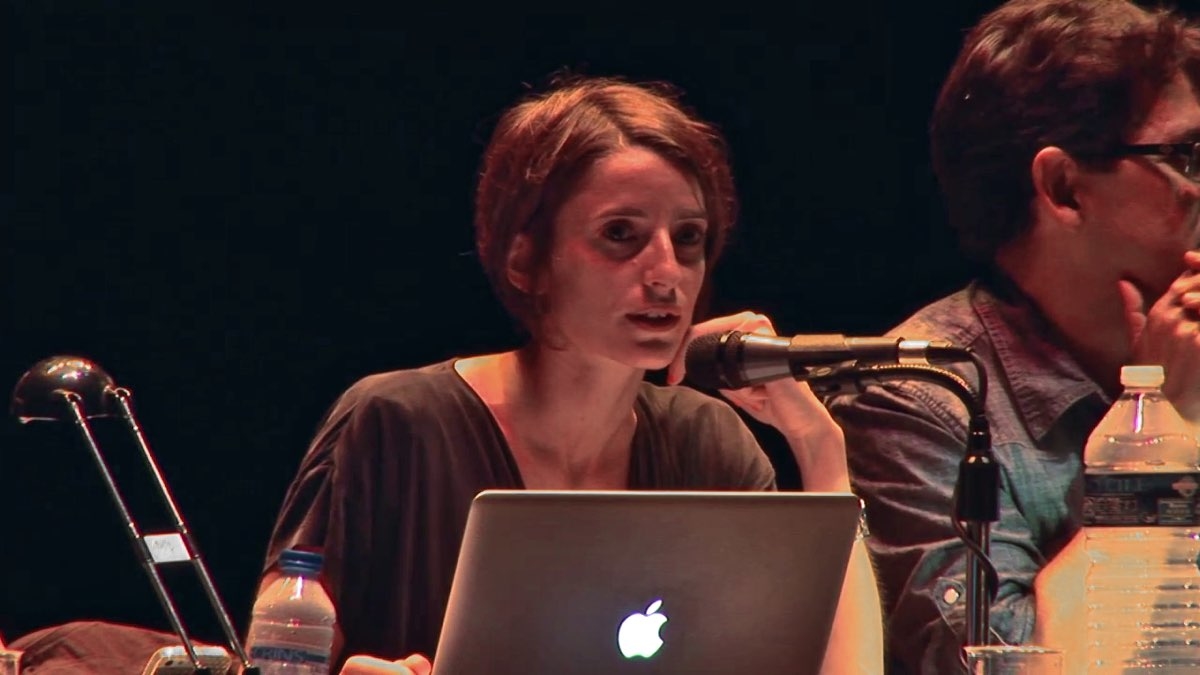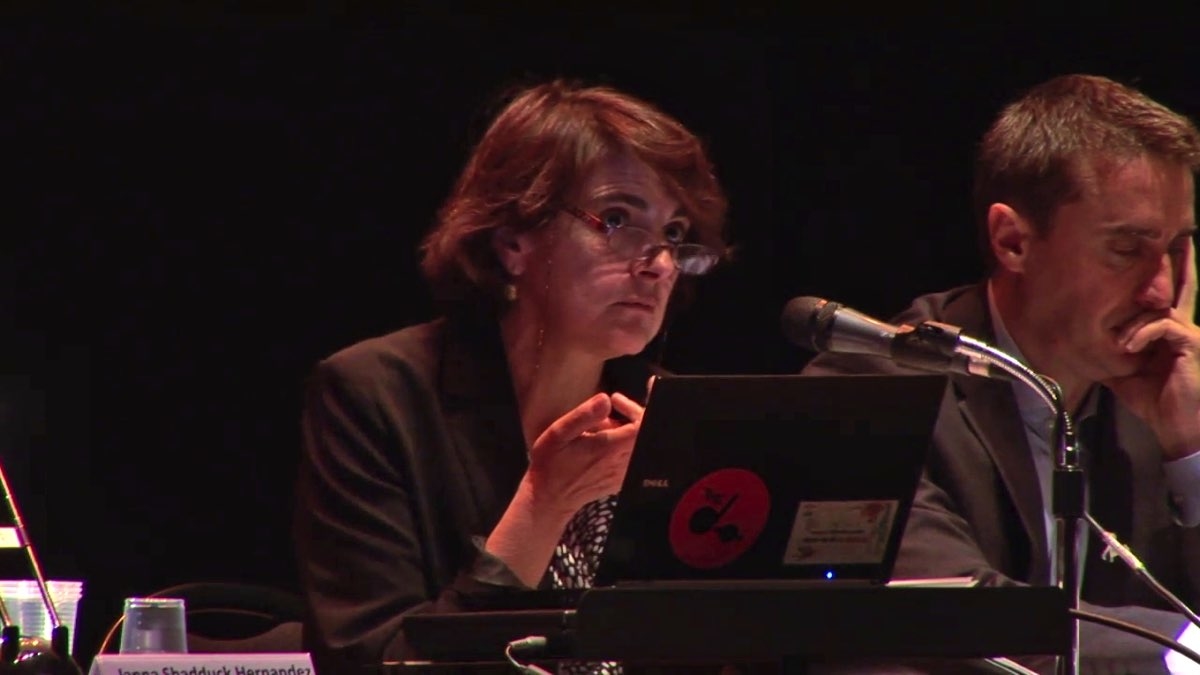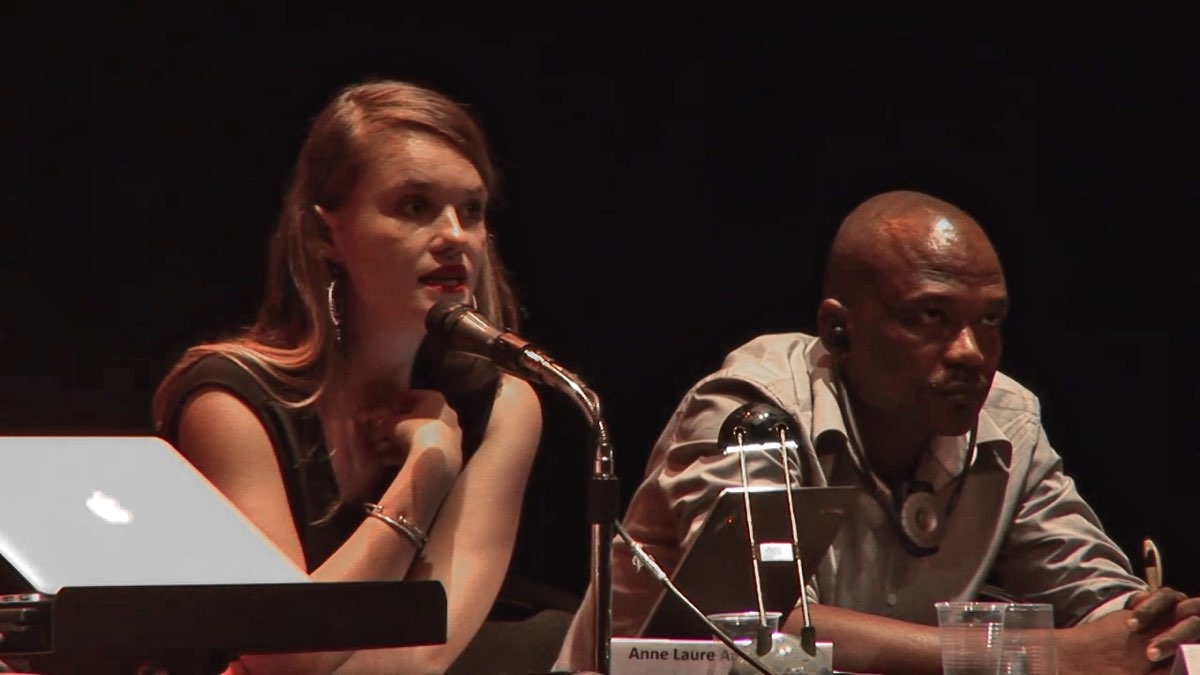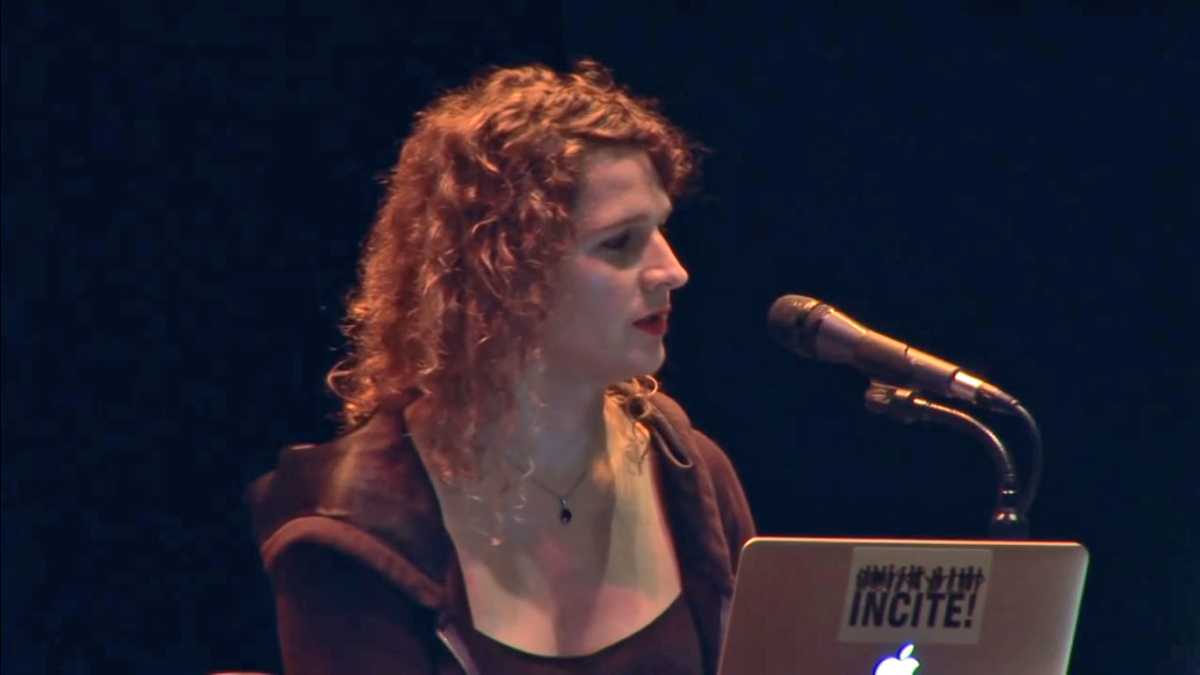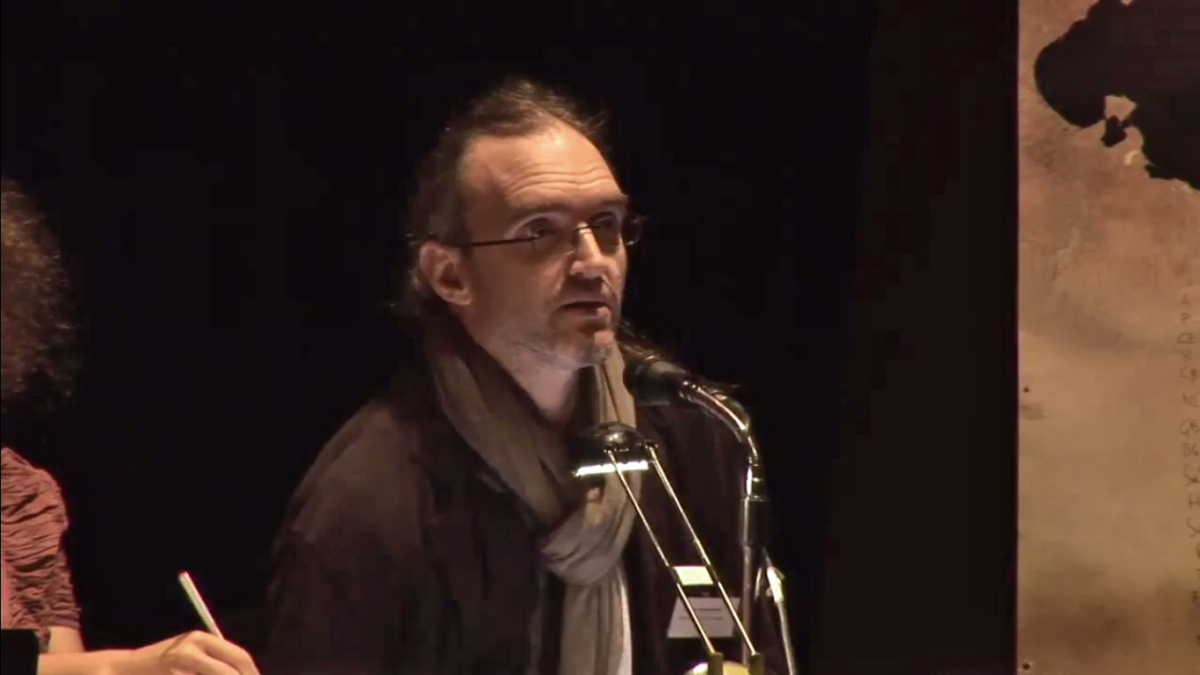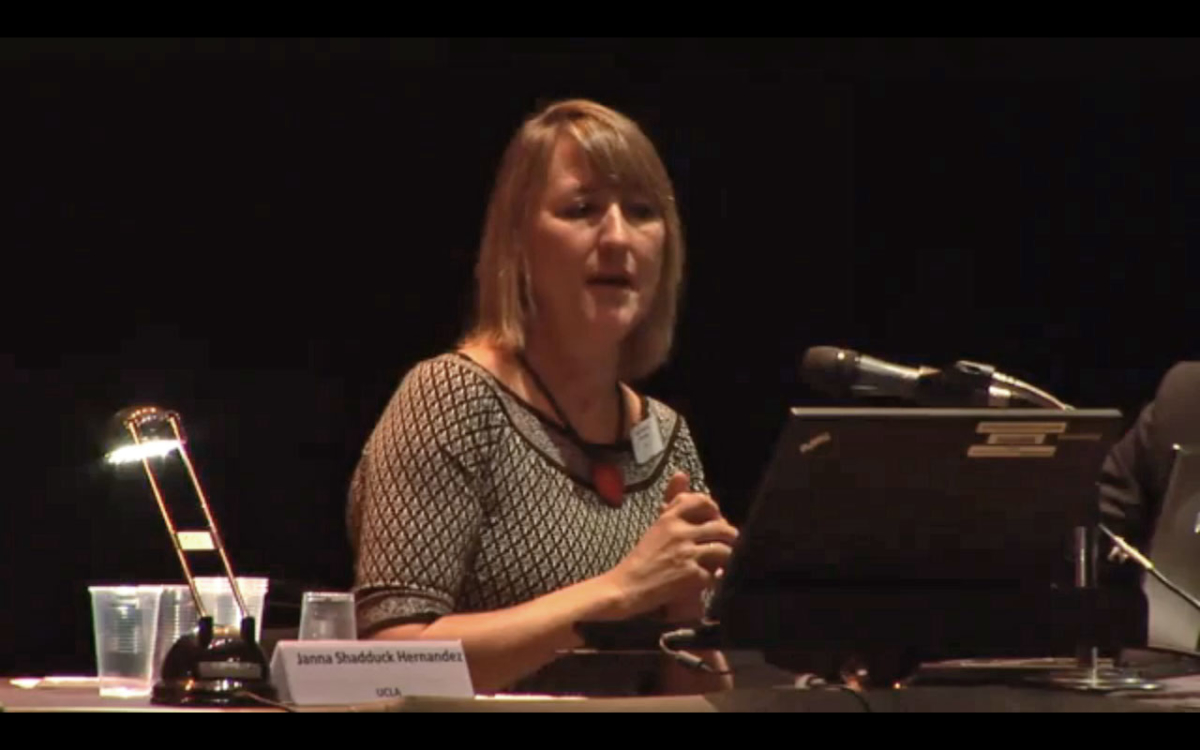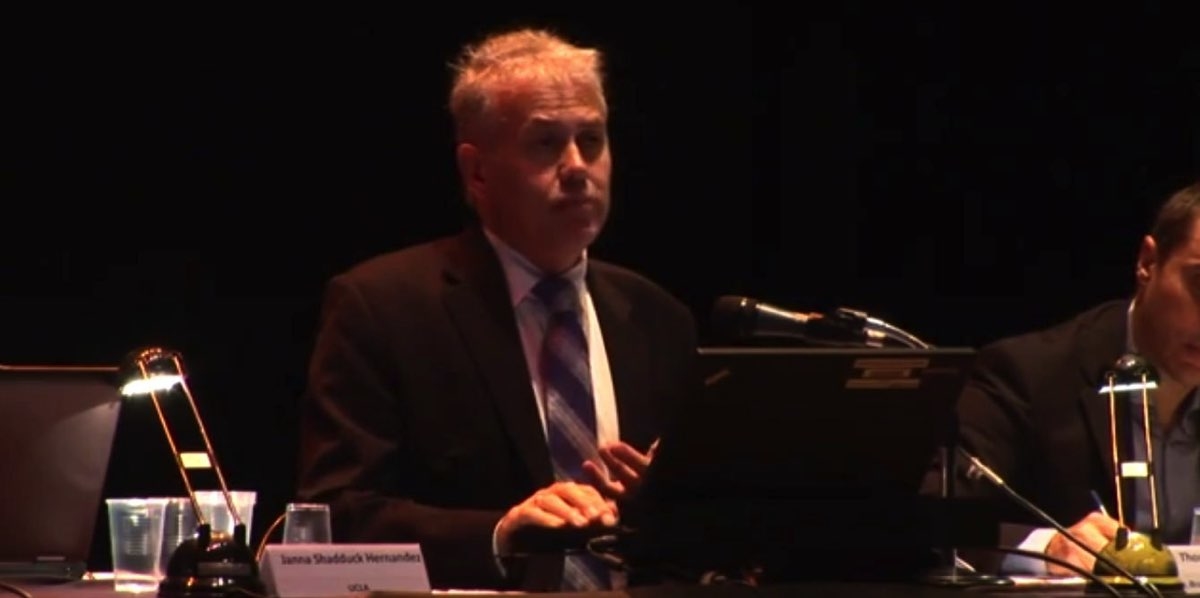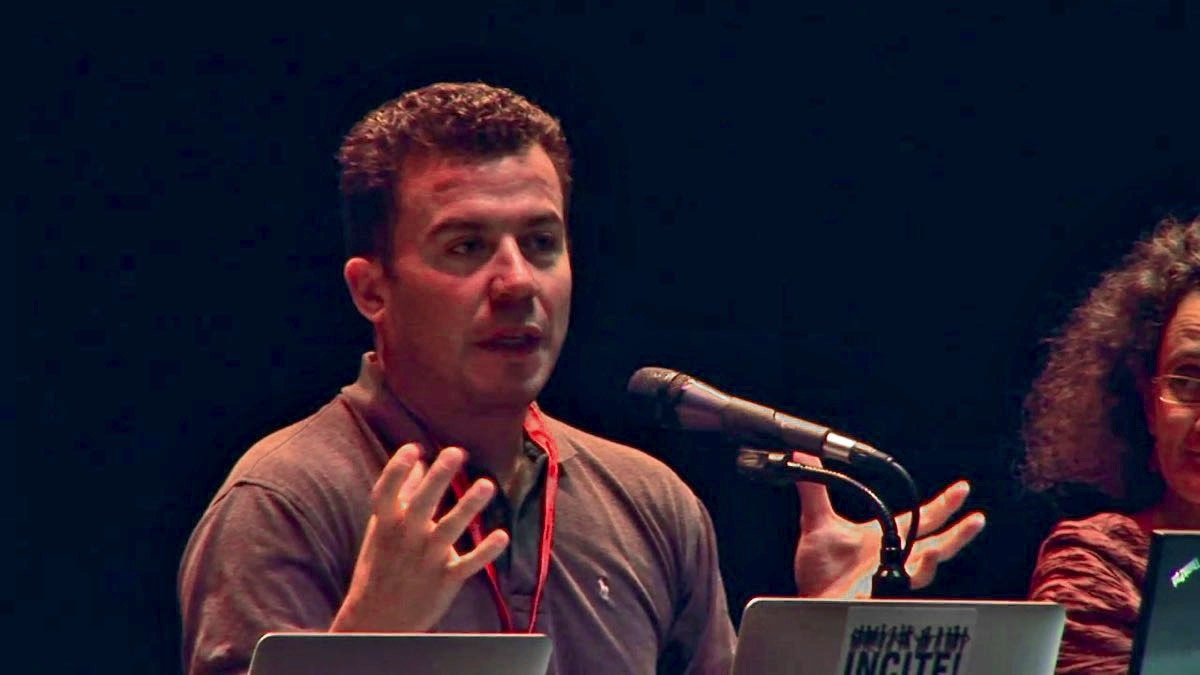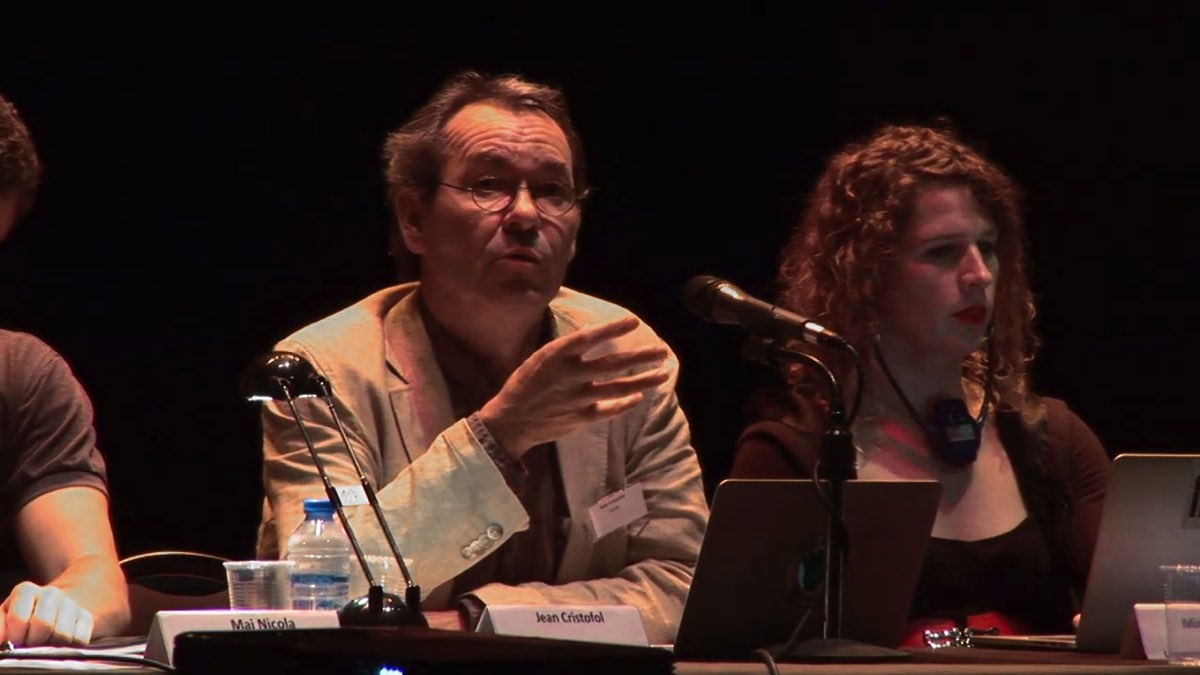Isabelle Arvers, curator et Antoine Vion, sociologist, LEST, Aix Marseille Université, CNRS
See the full program of the antiAtlas Aix-en-Provence 2013 conference
Category: Videos-en
Emmanuel Brunet-Jailly – Pushing the frontiers of border studies
Emmanuel Brunet-Jailly, political scientist, UVIC, Canada
See the full program of the antiAtlas conference Aix-en-Provence 2013
Ruben Hernandez Leon – The migration industry: charting the relations of facilitators, control and rescue actors in international migration
Ruben Hernandez Leon – University of California, Los Angeles, USA
In this presentation I argue that the migration industry plays a more significant role in structuring human mobility across borders than has been acknowledged by most theories of international migration. I first identify three forms of the migration industry: classic migration facilitators, the booming industry of migration control, and the so-called rescue industry. I then use Zolberg’s “Strange Bedfellows of American Immigration Politics,” a theoretical construct which explains the unusual alliances different actors establish in the field of immigration, to chart the location and relations of the migration industry with these actors. Finally, I account for the movement of actors across various divides (the profit/not-for-profit boundary, facilitation versus control, and the pro and anti-immigrant divide), demonstrating how these actors establish regular connections by means of multiple bridges and overlapping infrastructures.
See the full program of the antiAtlas conference Aix-en-Provence 2013
Heidrun Friese – Materialization-dematerialization of borders
Heidrun Friese – anthropologist, Bochum University, Germany
See the full program of the antiAtlas conference, Aix-en-Provence 2013
Charles Heller – The EU’s maritime frontier: striating the sea
Charles Heller – Centre for Research Architecture, Goldsmiths College – University of London/ Watch The Med project
Because any trace on water seems to be immediately dissolved by currents, the seas have long been associated with a permanent present, that resists any writing of history. The infinite liquid expanse has equally represented a challenge for governance: the impossibility of drawing stable boundaries in ever changing waters has led to consider the seas as a space of absolute freedom and flow – the “free seas”. In this presentation, I will show that on the contrary, the seas are increasingly documented and divided, and inextricably so. A complex sensing apparatus is fundamental to a form of governance that combines the division of maritime spaces and the control of movement, and that instrumentalises the partial, overlapping, and “elastic” nature of maritime jurisdictions and international law. It is in these conditions that the EU imposed migration regime operates, selectively expanding sovereign rights through patrols in the high seas but also retracting from responsibility, as in the many instances of non-assistance to migrants at sea. Through the policies and the conditions of maritime governance organized by the EU the sea is turned into a deadly liquid – the direct cause of over 13.000 documented deaths over the last 15 years. However, by using the Mediterranean’s remote sensing apparatus against the grain and spatialising violations of migrants’ rights at sea, I will demonstrate that it is possible to re-inscribe responsibility into a sea of impunity.
See the full program of the antiAtlas conference, Aix-en-Provence 2013
Stéphane Rosière – International borders between materialization and dematerialization
Stéphane Rosière – geographer, Université de Reims, France
Contemporary international borders are characterized by seemingly contradictory process of, on the one hand, virtualization and erasure and, on the other hand, materialization. Virtualization is the result of the increasing porosity of borders that are crossed by increasingly significant flows. Under the pressure of such flows boundaries tend to disappear or become ‘discrete’. They are also characterised by dynamics of delinearization and deterritorialization (development of dot-like frontiers as in the case of airports). At the same time, boundaries are marked by a process of materialization, with the construction of many “barriers” (Israel, United States, Saudi Arabia, Ceuta and Melilla, etc.), which are often called “walls”. This presentation will attempt to show how these dynamic, far from being contradictory, are rather linked according to a process of hierarchical ordering of flows within which people seem to be more problematic than goods…
See the conference slides and also the interview of Stéphane Rosière.
See the full program of the antiAtlas conference, Aix-en-Provence 2013
Joana Moll – Surveillance through social networks along the US-Mexico Border
Joana Moll, artist, Spain
The Texas Border and AZ: move and get shot are two net-based artworks which explore the phenomenon of surveillance on the internet carried out by civilians on the border between Mexico and the US. Many of these online platforms appeared during the rise of the social networking service whose structure was adopted as a cheaper and more efficient alternative way to monitor the border. Thus, the recreational activity became a tool for militarizing the civil society. This talk will expose the research process behind the two artworks and will analyze the evolution of some of these net based platforms from its inception to the present.
More informations: slides of the conference, Joana Moll’s website.
See the full program of the antiAtlas conference, Aix-en-Provence 2013
Cédric Parizot, Antoine Vion, Wouter van den Broeck – Israel Palestine below maps
Cédric Parizot – anthropologist, IMéRA, IREMAM, AMU/CNRS, France, Antoine Vion – sociologist, LEST, AMU/CNRS, France, Wouter van den Broeck – artist, Addith, Belgium
Israel Palestine below maps is a project of dynamic visualization of the relational chains developed by an anthropologist throughout his field work within the Israeli Palestinian space (2005-2010). This exploratory work involves an anthropologist (Cedric Parizot), a sociologist (Antoine Vion) and a specialist of complex data visualization (Wouter Van den Broeck). The first aim of this project is to provide a different understanding of the interconnectedness between Israeli and Palestinian spaces. The second aim is to confront the three researchers to unfamiliar practices, methodologies and data coming from other disciplines. One the one hand, the anthropologist is bound to operate a radical refocusing of his data, which resorts to a higher level of abstraction. While losing temporarily the precision of anthropological observation, this dynamic visualization offers a more global understanding of the social world he was inserted in. One the other hand, this experiment provides the sociologist together with the anthropologist a better sight on the condition of production of this knowledge, not merely by taking into account that this data is situated in specific places, time and interactions, but more particularl by stressing that the anthropologist and the sociologist are integral part of the border-network they intend to decipher. In other words, this project involves the anthropologist and the sociologist both as researchers and as objects of the research they perform. Finally, by tackling a different kind of complex network (involving fewer individuals but more complex layers of interactions), Wouter van den Broeck intends to experiment a new semiology in network mapping applicable to the study of networks drawn from qualitative research.
See the full program of the antiAtlas conference, Aix-en-Provence 2013
Steve Wright – Corporate military management approaches to climate change: from refuge to exclusion
Steve Wright, reader in Applied Global Ethics – Leeds Metropolitan University, UK
If we are to adequately anticipate and accurately judge the likely trajectory of future responses to climate change, a working assumption must be that the probabilities are that elite, state and corporate “solutions” over the next 50 years will be necessary, but not sufficient. For several nations this may mean the end; others will be faced with substantial internal migration and for others a mass exodus to foreign shores, as people struggle to find continuity. This presentation assumes that preparations to meet these challenges will be wholly inadequate. States will be panicked into emergency measures, including deep clamps on freedom of movement. Past analyses have treated such scenarios as environmental disasters but this presentation sees such scenarios as emergency planning options which have already been structured into state planning. What can we expect when continuity of energy and food supply chains can no longer be guaranteed? Wright will present evidence that many military organisations are already working on responses to climate change from a state security rather than a human security perspective. What does this entail?
Essentially, two interrelated processes kick in: one informatics based; the other focussed on technologies for systematic physical exclusion of unauthorized citizens, based on a wide variety of emergent coercive capacities. States already have tough systems at borders to prevent anyone without documentation passing and these are becoming increasingly sophisticated with various biometric recognition, surveillance and tracking capabilities. Face recognition and vehicle tracking systems originally designed in response to the “war against terror,” can be rapidly re-orientated towards climate change refugees. Such people will not be officially designated as such, since the general derogatory label of illegal immigrants will facilitate a legal exclusion response because climate change refugees have no legal status. We are already witnessing a security paradigm shift amongst key military powers to reframe climate change, as a major security threat. Similarly, the military, police, media entertainment, university security complex is already refining its capability set towards new measures, to ensure border security and zone exclusion. This new capability sets already include non-human algorithms and robotic elements for patrolling long borders and a wide variety of sub-lethal weaponry has emerged which can either be fired at crowds by humans or operated by machine intelligence. But how probable are such deployments?
I will explore the current reconfiguration of the major manufactures of intelligent fencing systems; unmanned ariel vehicles, robotic security and patrolling systems as well as lethal and sub-lethal weapons technologies and doctrines to meet the demands of these new markets. The presentation ends with a discussion of some ethical dilemmas of how to respond to such technical fixing. Should we acquiesce (which may be tantamount to collusion), or should we engage in research activism to reveal social and political consequences of existing fence systems like those recently erected in Bangladesh.. Such uneasy ethics will be at the core of any future intelligent policy response to climate-induced mass migration. Do we build resilience into modern architectures and infrastructure or a fortress: a human or an inhumane menu of future solutions?
See the full program of the antiAtlas conference, Aix-en-Provence 2013
Olivier Clochard & Laurence Pillant – Connected camps: detention places in Europe and beyond
Olivier Clochard – geographer, MIGRINTER, CNRS, MIGEUROP, France et Laurence Pillant – geographer, TELEMME, AMU/CNRS, France
Although camps imprisoning migrants in Europe each have their peculiarities and unique history, the rationale for their existence, as well as theiur underlying legal, political and economic dynamics are similar and are part of a common process. Adopting a network approach highlights the places now constituting the reticular borders of the Schengen area and of the European Neighbourhood Policy (ENP), which allows the authorities to implement boundaries that include territories laying within and outside the European union. The aim here is to define the scale and the extent of the networks linking the migrant camps. The cartographic analysis of this network allows us to understand and make visible the phenomenon of regional enclosure implemented by the European migration control.
See the full program of the antiAtlas conference, Aix-en-Provence 2013
Marc Bernardot – Borders, flows and networks
Marc Bernardot – sociologist, Cirtai, IDEES, France
See the full program of the antiAtlas conference, Aix-en-Provence 2013
Federica Infantino – The effects of the outsourcing to private service providers on the visa policy implementation
Federica Infantino – political scientist, FNRS/Université Libre de Bruxelles – Cevipol, Sciences Po Paris (CEE)
This contribution explores state responses to immigration based on the shifts in mode of regulation involving non-state actors (Guiraudon & Lahav, 2000). It focuses on the case of Schengen States cooperating with private service providers to implement the visa policy. The paper applies the street-level, implementation theoretical framework to an unusual field of inquiry: bordering policy rather than welfare policy. The paper draws on the case of visa services outsourcing in Morocco and is based on in-depth fieldwork research (12 months) carried out at the consulates of Belgium, France, Italy, and their relative visa application centres in Casablanca. The aim is twofold: first, tracing the processes leading to public/private governance as an emerging mode of the Schengen border management; second, questioning how public/private cooperation changes the conditions in which the visa policy is implemented therefore changing the policy outcomes. By putting forward how the conditions in which the visa policy is implemented change, the paper will argue that the determinants of the convergence of the Schengen visa policy outcomes are organizational factors determined by public/private cooperation.
See the full program of the antiAtlas conference, Aix-en-Provence 2013
Claire Rodier – The border economy
Claire Rodier – Migreurop, GISTI, France
See the full program of the antiAtlas conference, Aix-en-Provence 2013
Anne-Laure Amilhat Szary, Sarah Mekdjian & Gladeema Nasruddin – An antiAtlas of lived borders. Sharing the sensitivity of cartographer-migrants
Anne-Laure Amilhat Szary (PACTE, UJF/CNRS, France), Sarah Mekdjian (PACTE, UPMF/ CNRS, France), Gladeema Nasruddin (migrant demandeur d’asile)
This paper gives an account of a project conducted jointly by researchers, artists and migrants which consisted in mapping, creatively and critically, the migratory in-betweenness. This experience of participatory mapping workshops, located between art and science, also allows to question the methodological issues at stake when tacking in-betweenness within a project involving both creation and research, implying complex inter-relations of all stakeholders. How to create a framework for exchanges between scientists, artists and the invited guests to tell about their migration routes ?
On most scientific maps, the spaces crossed by migrants during their travels are often flown over by arrows that indicate the flow or direction of trajectories. The experiences of border crossings are nevertheless very significant in individual migration stories. For people who have no right of residence, the traveled border extends into the so-called reception areas. Thus, in Grenoble, but it could be also in many European cities, travelers still travel… Four mapping devices between art and science, have been proposed to twelve persons who were either seeking asylum or who had obtained refugee status, with the aim of presenting ” expanded” borders experiences.
Even produced with a participatory methodology, the map is never clear of power struggles. The interaction with the artists helped diversify the power of this mediation tool within the relationships between the different actors of workshops. Accounting of journeys by mapping them has created an original and creative framework for exchanges both during the workshops and now, within an exhibition space. The production of maps on four different media, allowed to bypass the dominant narrative register experienced by asylum seekers, that of chronologically linear life stories required by government agencies. Serving a scientific, artistic and political project, the maps have allowed the emergence of novel forms of ” undisciplined “knowledge.
More info: Cartographies traverses, Cartographies traverses displayed at Musée des Tapisseries.
See the full program of the antiAtlas conference, Aix-en-Provence 2013
Micha Cardenas – The transborder immigrant tool, science of the oppressed
Micha Cardenas – University of Southern California, USA
Science of the Oppressed, a term first used by the feminist philosopher Monique Wittig, and later adopted by the “artivist” collectives particle group and the Electronic Disturbance Theater 2.0, proposes an approach to knowledge production that does not claim an objective stance, or a profit motivated stance, but is informed by an experience of oppression and is aimed at creating social justice. In this performative talk I will discuss my collaboration with the Electronic Disturbance Theater 2.0 to create the Transborder Immigrant Tool, a dislocative media tool and media virus designed to provide poetic and physical sustenance to people crossing the Mexico/US Border. My work on this project led to my own further practices of Science of the Oppressed on a later project called Local Autonomy Networks / Autonets with the aim of building community based networks, both digital and post-digital, to prevent violence against transgender women of color, disabled people and sex workers. Autonets extends Science of the Oppressed with Femme Science and Femme Disturbance through relationship building as a strategy to build a world without prisons.
See the full program of the antiAtlas conference, Aix-en-Provence 2013
Johan Schimanski – Representation-Fiction at Borders
Johan Schimanski – University of Tromso, Norway
See the full program of the antiAtlas conference, Aix-en-Provence 2013
Janna Shadduck-Hernández – Crossing the Line? The political actions and organizing efforts of undocumented youth
Janna Shadduck-Hernández – University of California, Los Angeles, USA
Approximately, 65,000 undocumented high school students graduate from U.S. high schools every year but only 5-10 percent go on to college. Most of the estimated 1.9 million undocumented youth (16-30 years of age) residing in the U.S. are offered little incentive to finish high school, leading to high drop-out rates and no legal opportunities to work. During President Obama’s first term in office unprecedented numbers of undocumented youth and their families were detained and deported. As a response to the draconian U.S. immigration policies that separate parents and their children and deny undocumented youngsters educational and professional opportunities, a national youth movement, commonly known as the Dream Movement, has challenged, contested and resisted federal immigration legislation and border control through political organizing, direct action and civic advocacy and education. Hundreds of protests and actions led by undocumented youth are being organized throughout the nation. These include blocking access to federal immigration offices and detention centers; sit-ins in congressional members’ offices; cross border solidarity actions where undocumented families meet through border fences or create bi-national concerts; the public distribution of texts and social media written by undocumented youth; and the highly publicized youth organized self-deportations and self-arrests. In this workshop I will discuss, what conservative policy makers have called, youth “crossing the line”- the experiences of an ever increasing number of undocumented immigrant youth standing up and directly challenging U.S. government’s border and immigration policies despite their precarious and liminal migration status.
See the full program of the antiAtlas conference, Aix-en-Provence 2013
Didier Danet – 120,000 dollars per Wet Back”: what economic rationale for the smart border in the US
Didier Danet, director of “Pôle Action globale et forces terrestres” – Centre de recherche des écoles de Saint-Cyr Coëtquidan, France
In raw numerical terms the erection of a “smart border” between the United States and Mexico cost $ 18 billion in 2012 and resulted in the arrest of 357,000 people trying to cross illegally, which means that the cost of intercepting one clandestine amounts to more than 50 thousand dollars. This extremely high cost raises questions about the efficiency of policy implementation and the type of solution it favors, in which the bulk of the effort is focused on the deployment of sophisticated technological devices reinforced by substantial human resources.
The success of the solution adopted is even more important to evaluate since it exerts a powerful attraction on many policy makers, even though the resources that they could mobilize for this purpose are incommensurate with the budgets and time allocated by the U.S. administration in this program. As these dynamics are presented as matters of security and defense, two of the fundamental characteristics of the U.S. program need attention. The first relates to the conditions of implementation of a solution in which technology is presented as the central axis of a policy addressing a global issue with political, economic, and social dimensions. But this is a recurrent theme in the contemporary analysis of safety and defense issues. Secondly, the policy of “smart borders” is integral part of the increasing power of private actors in the implementation or design of sovereign mandates. Without a priori condemning the participation of certain types of private actors in the conduct of a state policy, it is however possible to question the relevance of the solution being implemented.
See the full program of the antiAtlas conference, Aix-en-Provence 2013
Nicola Mai – Assembling Samira: an art science installation on embodied humanitarian borders
Nicola Mai – LAMES, AMU/CNRS, France, London Metropolitan University, UK
The humanitarian protection of vulnerable migrant groups has enforced new biographical borders. Migrants seek to obtain state benevolence and legal migration status through the performance and embodiment of humanitarian scripts emphasizing victimhood and suffering. Only those whose performances of suffering and humanitarian subjectivities are deemed credible are given humanitarian protection. Gender and sexuality have become strategic narrative repertoires through which humanitarian and biographical borders are inscribed on the bodies of migrants. The Emborders filmmaking/research project reproduces the different performances and narratives of migrants targeted by humanitarian protection as they emerge in interviews with authorities, with social researchers and with peers and families. It draws on real stories and real people, which are performed by actors to protect the identities of the original interviewees and mirror the inherently fictional nature of any narration of the self. By using actors to reproduce real people and real life histories, the project ultimately challenges what constitutes a credible and acceptable reality in scientific, filmic and humanitarian terms.
Samira is a two-screen art science installation presenting the story of Karim. It assembles different ethnographic moments and scripts as they emerged through ethnographic fieldwork in Marseille. Karim is an Algerian migrant man selling sex as SAMIRA at night in Marseille. He left Algeria as a young man as her breasts started developing as a result of taking hormones and was granted asylum in France as a transgender woman. Twenty years later, as his father is dying and he is about to become the head of the family Samira surgically removes her breasts and marries a woman in order to get a new passport allowing him to return to Algeria to assume his new role.
Samira (Emborders 1) is the first of Emborders’ four installation/movies. It was produced by IMeRA in co-operation with SATIS (Departement Sciences Arts et Techniques de l’image et du Son of the Aix-Marseille University) and will be presented at the antiAtlas exhibition.
See the conference slides, the installation Samira.
See the full program of the antiAtlas conference, Aix-en-Provence 2013
Jean Cristofol – Distance and proximity in a multidimensional space
Jean Cristofol – philosopher, Higher School of Art Aix en Provence, France
The physical space in which we live is inseparable from the forms through which we represent it. These forms mobilize objective knowledge, but they also engage an imaginary in which we project ourselves. From this point of view, the physical space is not only the result of our practices. It is inhabited by subjects who identify issues within it . It is defined by fictions and stories.
We inherit these stories and fictions, which implement a continuous space that is based on the opposition of near and far, distance and proximity, here and elsewhere. Borders draw lines of discontinuity between homogeneous entities. The figure of the journey, that of utopia, the themes of the island or the labyrinth, the limit and the crossing are incarnations of such stories. But these figures are not only free constructions of the mind, they are also in correspondence with the forms and media in which they were articulated. They are actually produced by the relationship to the modes of technical and social existence of an era.
When trade and travel are determined by the flow of information and ubiquitous autonomous devices affect our modes of perception and our direct action capabilities, how can we conceive and operate them? What is our relationship to space when it is built in a complexity that disrupts the ways to understand the very meaning of distance or proximity? If the space in which we live and communicate is a complex and multidimensional one, how can we build its representation?
See the full program of the antiAtlas conference, Aix-en-Provence 2013
